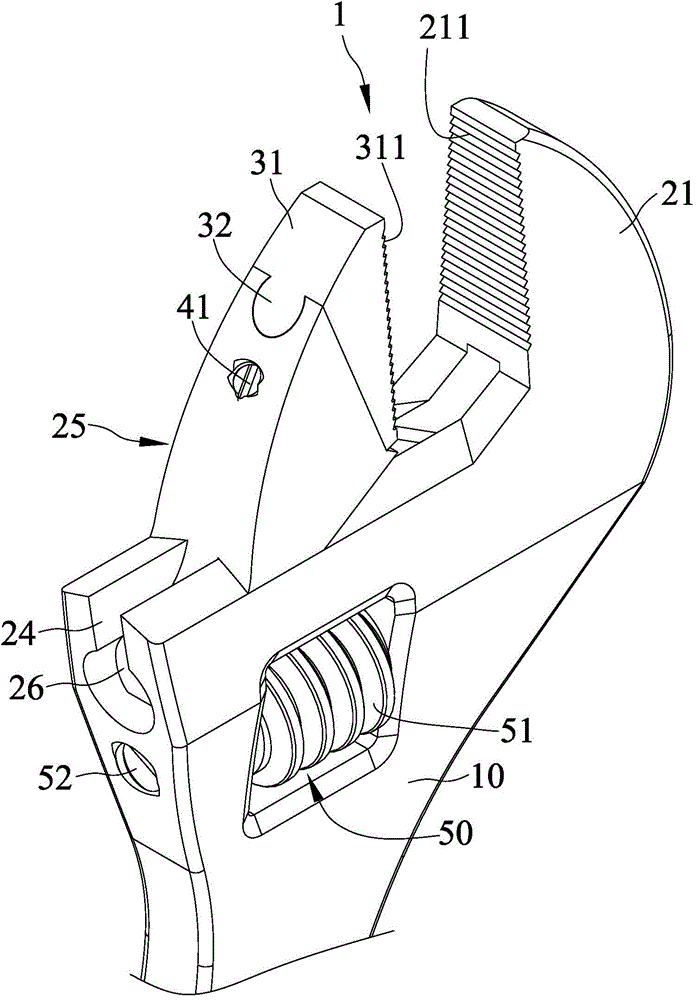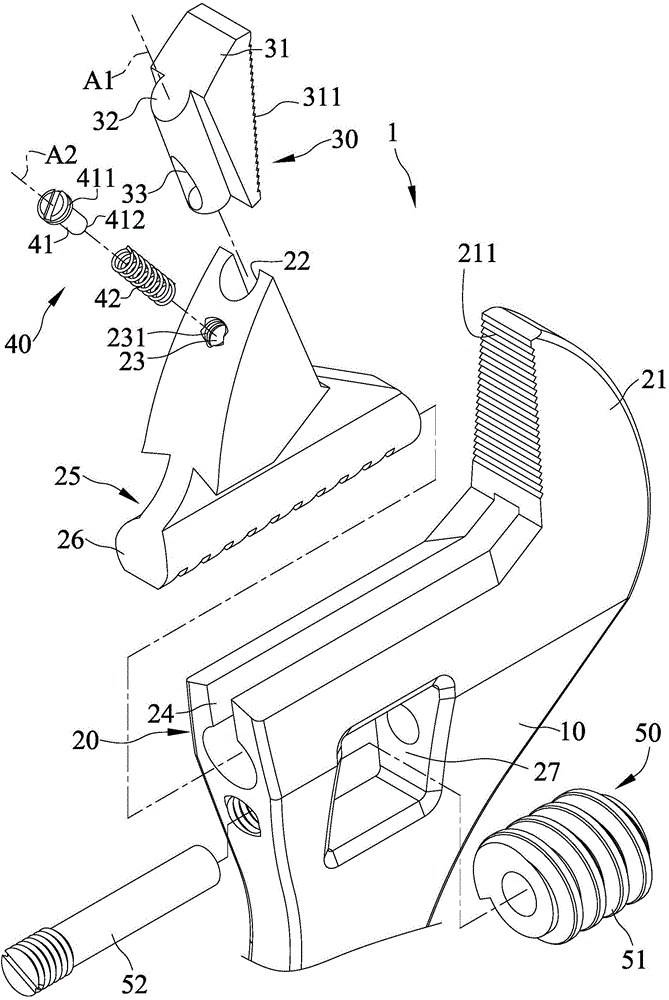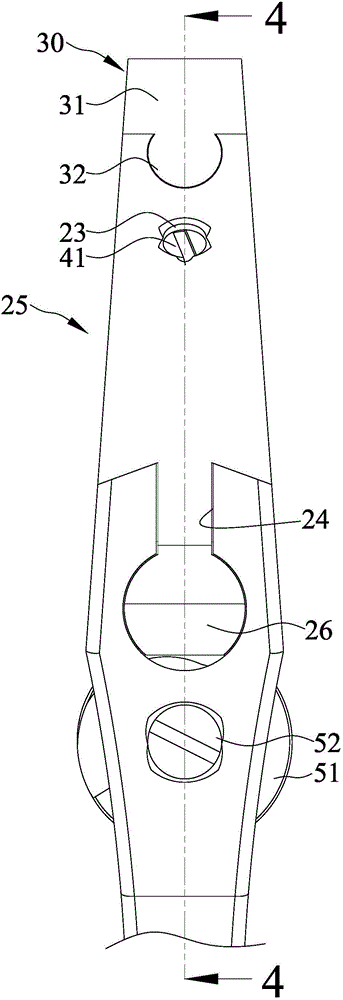Ratchet spanner
A wrench and ratchet technology, applied in the field of wrenches, can solve the problems of complex structure and insufficient strength of ratchet wrench, and achieve the effect of high structural strength and lower manufacturing cost.
- Summary
- Abstract
- Description
- Claims
- Application Information
AI Technical Summary
Problems solved by technology
Method used
Image
Examples
Embodiment Construction
[0040] Regarding the technology, means and effects used in the present invention, three preferred embodiments are given and described in detail below with drawings, which are for illustration only, and are not limited by this structure in the patent application.
[0041] Please refer to Figure 1 to Figure 6 , which is a partial three-dimensional appearance view, a partial exploded view, a side view and a sectional view of the first embodiment of the ratcheting wrench 1 of the present invention. The first embodiment of the ratchet wrench 1 of the present invention is an adjustable wrench, which includes a handle 10 , a head 20 , a movable jaw 30 , a biasing device 40 and an adjusting device 50 .
[0042] The handle 10 can be held by a user.
[0043] The head 20 is formed at either end of the handle 10 along a length direction, and the head 20 includes at least one fixed jaw 21 , a sliding groove 22 , a receiving hole 23 , a locking groove 24 , and a movable jaw 25 , a lockin...
PUM
 Login to View More
Login to View More Abstract
Description
Claims
Application Information
 Login to View More
Login to View More - R&D
- Intellectual Property
- Life Sciences
- Materials
- Tech Scout
- Unparalleled Data Quality
- Higher Quality Content
- 60% Fewer Hallucinations
Browse by: Latest US Patents, China's latest patents, Technical Efficacy Thesaurus, Application Domain, Technology Topic, Popular Technical Reports.
© 2025 PatSnap. All rights reserved.Legal|Privacy policy|Modern Slavery Act Transparency Statement|Sitemap|About US| Contact US: help@patsnap.com



